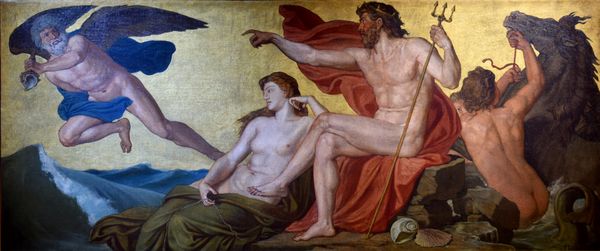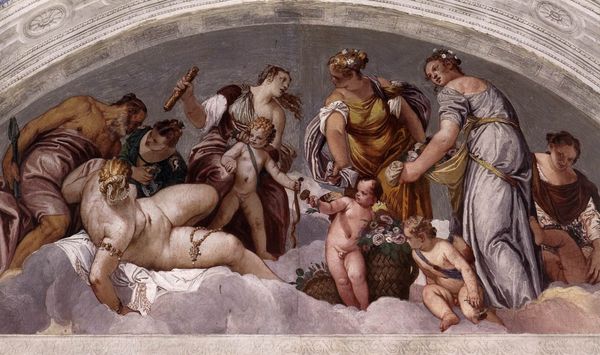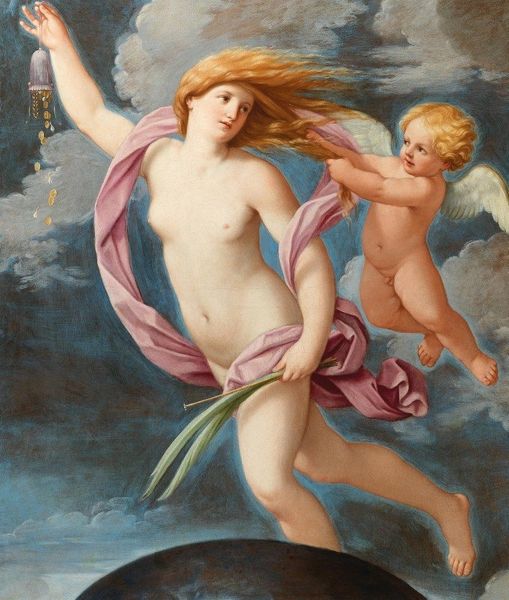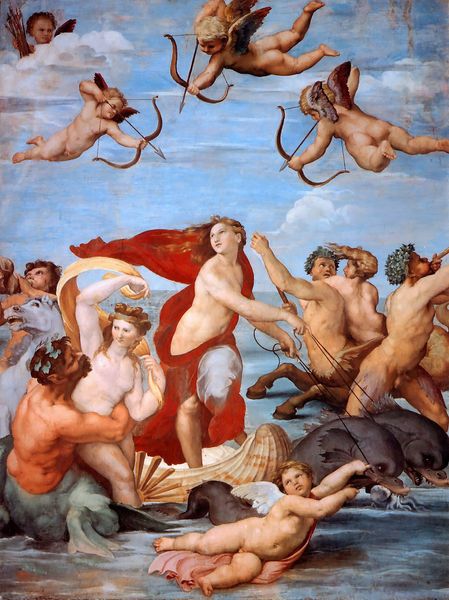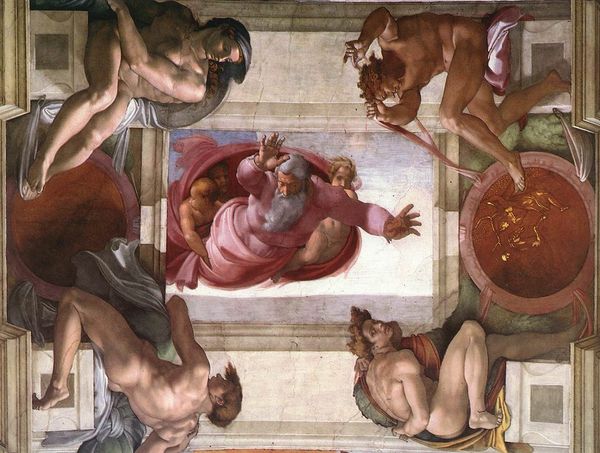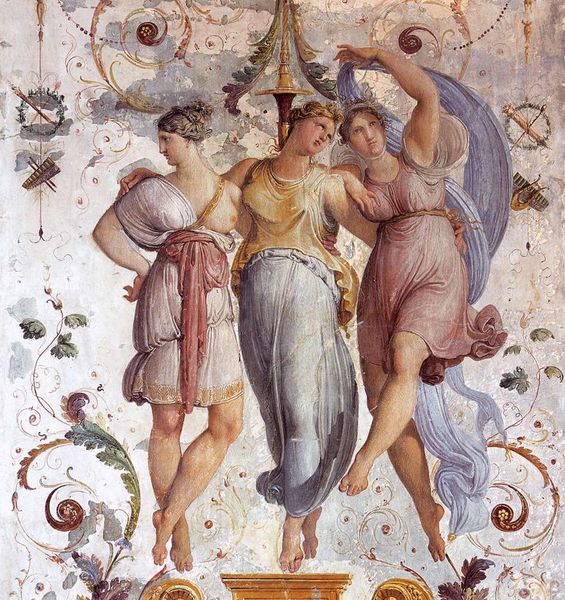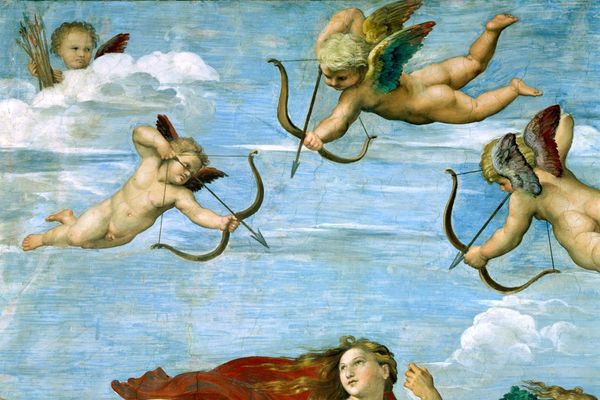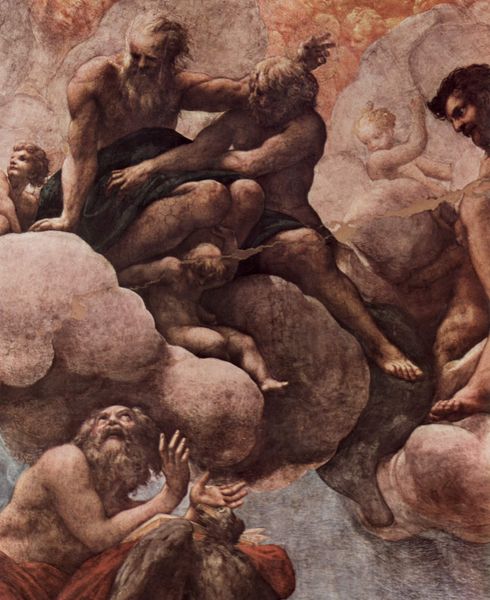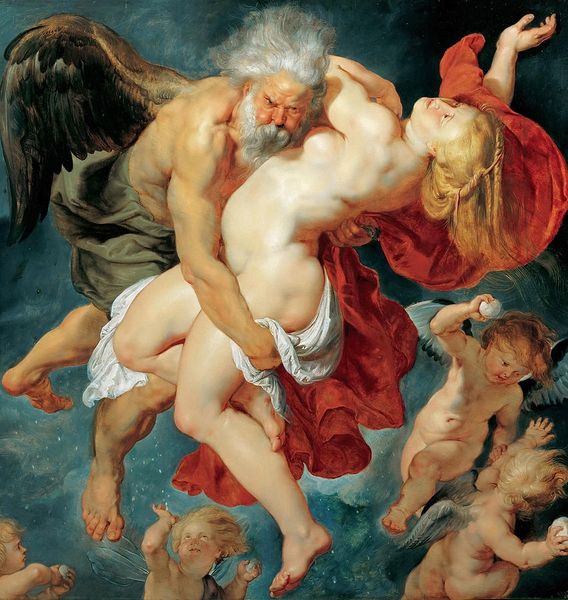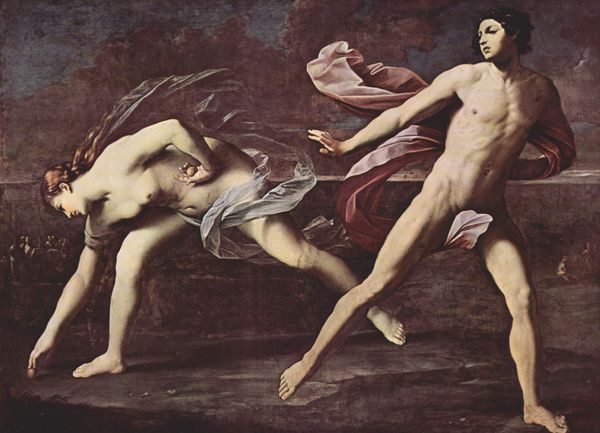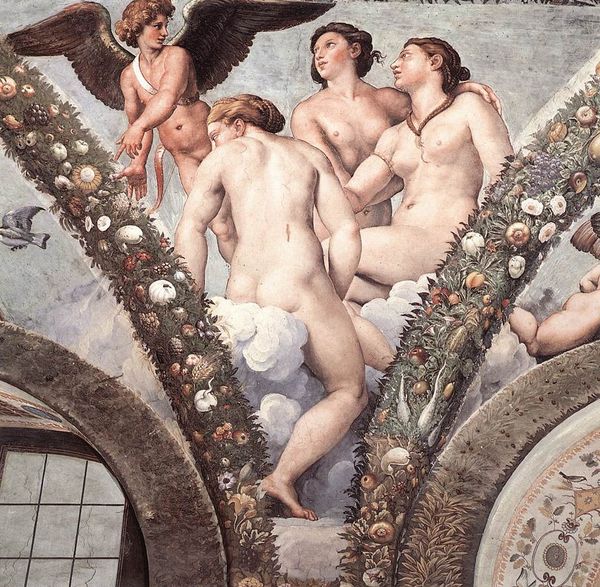
oil-paint
#
high-renaissance
#
allegory
#
oil-paint
#
oil painting
#
mythology
#
italian-renaissance
#
nude
#
portrait art
Copyright: Public domain
Curator: This is a detail from Raphael’s "The Triumph of Galatea," painted around 1506. You’ll find the fresco at the Villa Farnesina in Rome. Editor: The movement leaps right out! There’s such a feeling of joyous chaos in this slice of the mural. It’s very… fleshy. Curator: Indeed. It’s a prime example of the High Renaissance style, full of classical allusions. Galatea, a sea nymph, is shown in triumphant motion. Look at how the figures around her— sea creatures and other mythological beings—convey not just movement, but also the sheer abundance associated with the sea. Editor: What strikes me is the visible process. Look at the thinness of the paint, and the way it's layered on the plaster. You can almost see the hand of the artist at work, especially in the swirling drapery around Galatea. Curator: Raphael masterfully incorporates pagan iconography with humanist ideals. Galatea symbolizes ideal beauty and grace, and her triumph can be interpreted as the triumph of love and harmony over the chaotic forces of nature. Neptune was quite smitten, and of course, Ovid wrote extensively of Galatea. This visual interpretation is, if you will, shorthand for themes of rebirth and renewal that permeated Renaissance thought. Editor: Right, and those “chaotic forces” are literally being wrangled, aren't they? It’s fascinating how Raphael, through his very deliberate artistic labor and careful manipulation of pigment, brings order to those “wild” forms. It reminds me that the social context also informs how we consume idealized images. What materials are luxurious? What colors are valued? What physical form represents power? These were consciously determined artistic choices for Raphael to celebrate this particular mythology for his patrons. Curator: Exactly. Each detail adds a layer of meaning to the overall narrative. Even the poses evoke classical sculpture. It is truly about more than just the paint itself, but a kind of encoded cultural memory, expressed through idealized beauty. Editor: But I would argue the paint IS essential to the effect. Consider the color saturation, the almost casual virtuosity in representing flesh, cloth, and sea creatures... it’s seductive, physically and visually. That material impact, produced through the skilled labor of an individual and his workshop, had and continues to have, a tangible effect on the world. Curator: It is interesting how differently we can look at this work and find distinct value in it. Editor: Indeed. Every layer offers another kind of truth, right?
Comments
No comments
Be the first to comment and join the conversation on the ultimate creative platform.

